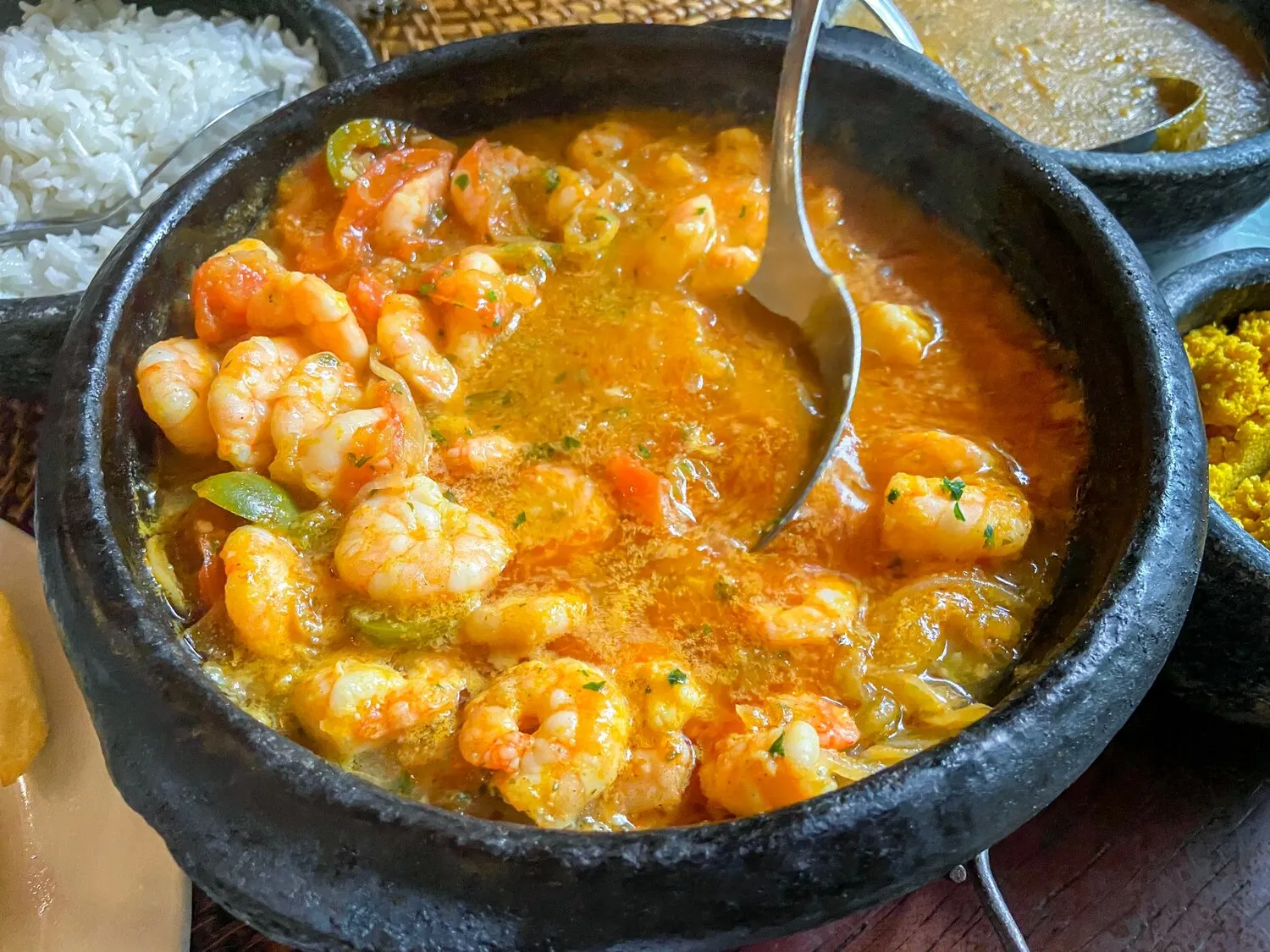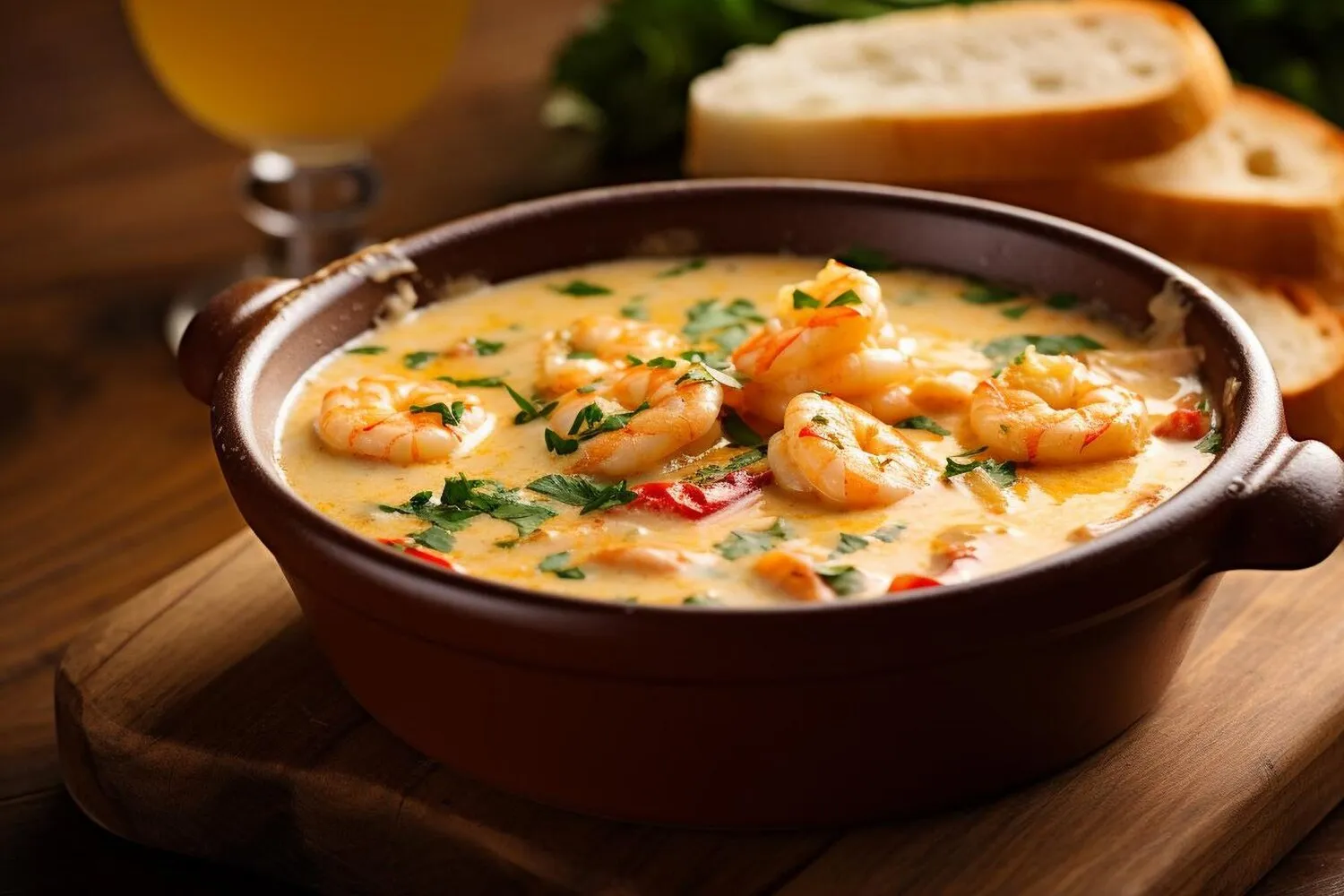
Moqueca de Camarão
Shrimp Moqueca is a typical Brazilian dish, a seafood stew, widely prepared in the states of Espírito Santo and Bahia. It is cooked in a clay pot, slowly, seasoned with tomatoes, onions, garlic, cilantro and peppers, with the addition of coconut milk and palm oil.
Nutrition Facts
* The % Daily Value (DV) tells you how much a nutrient in a serving of food contributes to a daily diet. 2,000 calories a day is used for general nutrition advice.
Lindomar Restaurante e Petisqueira
Moqueca's origins are debated, but it's generally accepted that indigenous cooking techniques combined with African and Portuguese influences to create the dish. Indigenous Brazilians used clay pots to cook fish and seafood, while African slaves introduced ingredients like palm oil (dendê) and coconut milk. Portuguese colonizers brought tomatoes, onions, and peppers.
Moqueca de Camarão is more than just food; it's a cultural symbol, especially in the coastal states of Espírito Santo and Bahia. It represents a blend of traditions and a celebration of Brazilian culinary heritage. It's often prepared and shared during family gatherings and special occasions.
Regional Variations
The two main types of Moqueca are Capixaba (from Espírito Santo) and Baiana (from Bahia). The key difference lies in the use of palm oil and coconut milk. Baiana Moqueca uses both, giving it a richer and more intense flavor and a characteristic orange color, while Capixaba Moqueca typically omits palm oil, resulting in a lighter and more delicate flavor.
Clay Pot Significance
Traditionally, Moqueca is cooked and served in a clay pot (panela de barro). The clay pot helps to distribute heat evenly, preventing the ingredients from burning and contributing a subtle earthy flavor to the dish. The serving style is also important, maintaining heat.
Community and Celebration
Moqueca is often a dish prepared for large gatherings and celebrations. The act of cooking and sharing Moqueca fosters a sense of community and strengthens family bonds. It's a dish meant to be enjoyed together, with ample portions and accompaniments.
Moqueca de Camarão offers a vibrant and layered flavor profile, balancing the sweetness of shrimp with the richness of coconut milk, the tang of tomatoes, and the subtle heat of peppers. The dish is fragrant and savory, with a distinct coastal essence.
The prominent flavors are the sweetness and delicate texture of the shrimp, complemented by the creamy, slightly sweet notes of coconut milk. Tomatoes provide acidity and umami, while onions and garlic form the aromatic base. Cilantro contributes a fresh, herbaceous note. The key ingredient, palm oil (dendê), lends a distinctive reddish color and a unique, slightly earthy and pungent flavor. Peppers, such as malagueta, add a controlled level of heat.
Shrimp Quality
Use fresh, high-quality shrimp for the best flavor and texture. Devein the shrimp thoroughly, but leave the tails on for presentation and added flavor during cooking. Larger shrimp tend to hold up better during the cooking process.
Palm Oil Caution
Palm oil (dendê) can be overpowering if used excessively. Start with a small amount and add more to taste. Be mindful of the intensity, and balance the flavor accordingly. It is a defining ingredient, but should not overwhelm the other flavors.
Gentle Cooking
Cook the Moqueca over low heat to allow the flavors to meld together slowly and prevent the shrimp from becoming rubbery. Avoid stirring too much, as this can break down the ingredients. Simmering is key to a flavorful result.
Layering Flavors
Build the flavors in layers, starting with the aromatics (onions, garlic) and then adding the tomatoes, peppers, and coconut milk. This allows each ingredient to release its flavor fully and create a complex and balanced dish.
Explore additional Seafood Stew dishes and restaurants
Explore Seafood StewDiscover top dining spots and culinary experiences in Penha.
Explore PenhaLearn more about the food culture, restaurant scene, and culinary heritage of Brazil.
Explore Brazil
